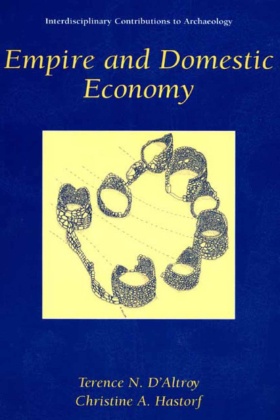
Empire and Domestic Economy
| Verlag | Springer |
| Auflage | 2001 |
| Seiten | 382 |
| Format | 23,5 cm |
| Gewicht | 753 g |
| Artikeltyp | Englisches Buch |
| Reihe | Interdisciplinary Contributions to Archaeology |
| EAN | 9780306464089 |
| Bestell-Nr | 30646408EA |
We are both immensely pleased to have played supporting roles in the archaeological research that led to this volume. As a faculty member at the Universidad del Centro (Huancayo) in the 1960s and later at the Universidad Nacional de San Marcos (Lima), Matos Mendieta developed a special interest in the Upper Mantaro and adjacent Tarma drainages, and during the 1960s and 1970s, he carried out general reconnaissance and several excavations in the area between Lake Junín and Huancayo. Matos Mendieta began his field research in the Sierra Central as part of the Proyecto Andino de Estudios Arqueológicos sponsored by the Smithsonian Institution. As a fellow at the Smithsonian Institution in the mid-1960s, Matos Mendieta began to interact more closely with North American scholars; during this period, he began to encourage and facilitate the interests of several US. -based archaeologists in the Peruvian Sierra Central, including Craig Morris, John Murra, and Donald Thompson, who were begin ning fieldwork at and around the Inka provincial center of Huanuco Pampa north of Lake Junín, and David Browman, who in 1969 carried out one of the very first systematic archaeological surveys in highland Peru over parts of the main Mantaro Valley between Huancayo and Jauja.
Inhaltsverzeichnis:
Investigating the Domestic Economy.- The Domestic Economy, Households, and Imperial Transformation.- The Cultural Setting.- The Natural Environment.- The Archaeological Context.- Ethnoarchaeology and Contemporary Domestic Economy in the Mantaro Valley.- Life in the Community.- The Architecture and Organization of Xauxa Settlements.- Agricultural Production and Consumption.- Animal Husbandry and Meat Consumption.- Production and Exchange of Ceramics.- State Goods in the Domestic Economy: The Inka Ceramic Assemblage.- The Economy of Metal and Shell Wealth Goods.- Synthesis and Conclusions.- Exchange and Social Stratification in the Andes The Xauxa Case.- The Xauxa Andean Life.- From Autonomous to Imperial Rule.
Rezension:
From the reviews
"...has important theoretical implications for archaeological studies of empires, worldwide. Terence N. D'Altroy, Christine A. Hastorf, and their associates have helped move the Andes closer to the front lines of theory building in archaeology. Every chapter is rife with implications for the study of similar societies anywhere in the world, and each is a gem unto itself. Rarely have the archaeologically visible effects of imperial domination been so clearly documented. D'Altroy, Hastorf, and their associates most effectively have raised the bar for future studies of imperial-provincial relations. This book should reside in the library of every archaeologist with an interest in empires."
Journal of Anthropological Research, 58 (2002)
"...a tribute to the stamina and perseverance of both editors and contributors." (Norman Hammond, Antiquity)
